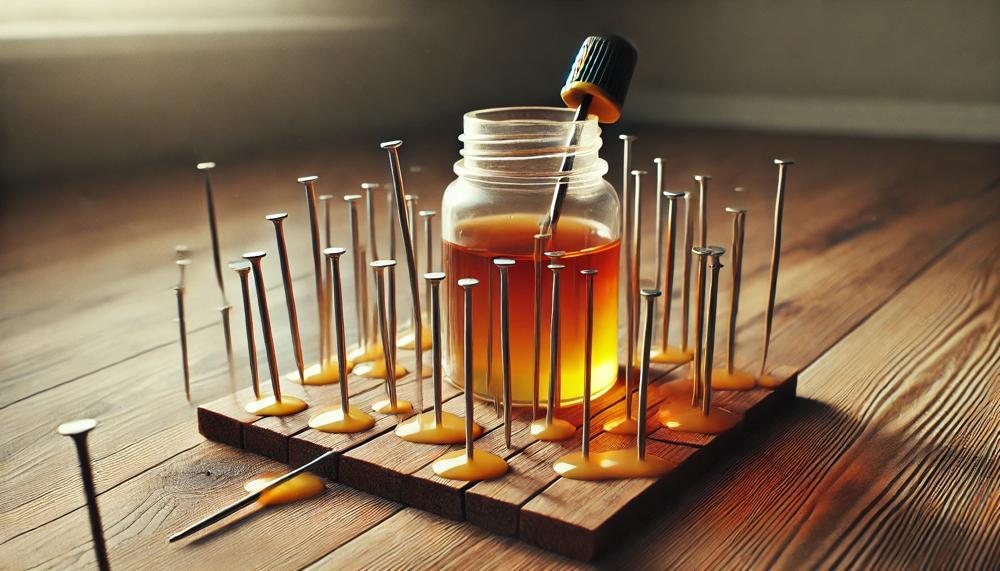Yes, you can use liquid nails on laminate flooring, but there are some important caveats to consider. Liquid nails is a powerful construction adhesive that creates a durable bond, preventing your laminate floors from shifting or moving. However, using it may void the warranty from the manufacturer. Here are the key points to keep in mind:
• Liquid nails provides an incredibly strong grip, ensuring your laminate stays firmly in place
• It dries relatively quickly and is easy to apply with a caulking gun

• The surface must be properly cleaned and dried before application
• Allow sufficient drying time before walking on the newly installed floor
• Using liquid nails goes against most manufacturer recommendations for laminates
• Excess adhesive can be difficult to remove and may damage the laminate surface
• Alternative approved adhesives include PVA glue and polyurethane adhesive
While liquid nails offers excellent bonding power, it’s crucial to weigh the pros and cons carefully. Proper subfloor preparation is equally vital for a successful laminate installation. By understanding the potential risks and following best practices, you can make an informed decision that doesn’t compromise the integrity of your new floors.
Table of Contents
How to Use Liquid Nails On Laminate Flooring
Here are some helpful tips and tricks for using liquid nails on laminate flooring to ensure it is done correctly the first time:
| Use the Right Adhesive | Choose a liquid nails adhesive specifically formulated for subfloors and wood-based products. This will provide a strong bond and prevent shifting. | Liquid Nails Flooring Adhesive |
| Prepare the Surface | Ensure the subfloor is clean, dry, and free from debris. Any moisture or dirt can weaken the bond and cause the laminate to lift. | How to Prepare Subfloor |
| Apply Adhesive Correctly | Follow the manufacturer’s guidelines for application. Use a notched trowel to spread the adhesive evenly and avoid applying too much. | How to Apply Construction Adhesive |
| Apply Pressure | Use a rubber mallet or wood block to tap down the laminate planks and ensure a secure bond with the adhesive. | Video: Applying Pressure to Laminate Flooring |
Removing and Storing Construction Adhesives
Removing and storing construction adhesives like liquid nails when working with laminate flooring requires proper precautions and techniques. Here’s how you can do it safely and effectively:
| Removing Liquid Nails | Storing Liquid Nails |
|---|---|
|
|
Remember, construction adhesives like liquid nails contain strong chemicals, so it’s crucial to handle them with care and follow proper safety measures. By taking the right precautions and using the correct techniques, you can effectively remove and store these adhesives, ensuring a safe and successful laminate flooring installation.
How-To’s for Outdoor Projects
| Meticulously prepare the surface | Ensure the subfloor is spotless, free from debris, and thoroughly dried. A clean, moisture-free base is pivotal for optimal adhesion. | Laminate Flooring Installation Guide | ||||||||||||||||||||||||||||||||||||||||||||||||||||
| Follow the manufacturer’s instructions | Diligently read and adhere to the liquid nails application guidelines provided by the manufacturer. Proper usage is crucial for a seamless, long-lasting installation. | Liquid Nails Product Instructions | ||||||||||||||||||||||||||||||||||||||||||||||||||||
| Apply the adhesive strategically | Employ a caulking gun or trowel to evenly distribute the liquid nails in a serpentine or bead pattern across the subfloor, ensuring comprehensive coverage. | Using Construction Adhesives | ||||||||||||||||||||||||||||||||||||||||||||||||||||
| Lay the laminate planks promptly | Position the laminate flooring planks onto the freshly applied adhesive within the open time specified by the manufacturer, typically 10-20 minutes. | How to Install Laminate Flooring | ||||||||||||||||||||||||||||||||||||||||||||||||||||
| Allow ample curing time | Refrain from walking on the newly installed floor for the duration recommended by the adhesive manufacturer, typically 24-48 hours, to permit full curing. | |||||||||||||||||||||||||||||||||||||||||||||||||||||
| While Liquid Nails can provide a strong bond, it may not be the ideal adhesive for laminate flooring installation due to potential moisture damage and lack of flexibility. However, if you choose to use it, here are some crucial steps to follow: | ||
| Surface Preparation | Ensure the subfloor is clean, dry, and free from debris or contaminants. Proper surface preparation is vital for optimal adhesion. | |
| Application Method | Apply Liquid Nails in a serpentine pattern or in beads along the subfloor, following the manufacturer’s recommendations. Avoid over-applying, as excessive adhesive can seep through the seams. | Liquid Nails Application Instructions |
| Timing | Promptly lay the laminate planks onto the adhesive within the open time specified by the manufacturer, typically 10-20 minutes. Delaying installation may compromise the bond strength. | |
| Curing Time | Allow ample curing time, usually 24-48 hours, before walking on the floor or placing furniture. Proper curing ensures maximum bond strength and durability. | |
| Warranty Considerations | Check with the laminate flooring manufacturer, as using Liquid Nails may void any warranties or installation guidelines. Some manufacturers may recommend specific adhesives for their products. | Laminate Flooring on Wikipedia |
Remember, while Liquid Nails can provide a strong bond, it may not be the ideal choice for laminate flooring due to potential moisture issues and lack of flexibility.
How-To’s: Tips and Tricks
| Tip | Description |
| Follow manufacturer’s instructions | Carefully read and follow the instructions provided by both the Liquid Nails and laminate flooring manufacturers. This will ensure proper application and compatibility. |
| Prepare the subfloor | Ensure the subfloor is clean, dry, and level before applying Liquid Nails. Any debris or unevenness can affect the adhesion and flooring installation. |
| Apply in a serpentine pattern | For optimal coverage, apply Liquid Nails in a serpentine or zigzag pattern on the subfloor, rather than in straight lines. This helps distribute the adhesive evenly. |
| Use the right amount | Apply a thin, continuous bead of Liquid Nails, following the manufacturer’s recommended coverage rate. Too much adhesive can ooze out and create a mess, while too little may compromise the bond. |
| Allow proper drying time | After installation, allow the Liquid Nails to fully cure before walking on the laminate flooring. Check the manufacturer’s recommended drying time, typically 24-48 hours. |
| Clean up excess adhesive | Carefully remove any excess Liquid Nails that oozes out from the seams or edges before it dries, using a putty knife or recommended solvent. Dried adhesive can be difficult to remove. |
Remember, using Liquid Nails on laminate flooring may void the manufacturer’s warranty, so it’s crucial to check with them first.
How-To’s: Misc
Here are the detailed steps for properly using liquid nails on laminate flooring:
| Step 1: Prepare the Subfloor | Ensure the subfloor is clean, level, and free from debris or moisture. Repair any cracks or imperfections to provide a smooth surface for installation. | |
| Step 2: Choose the Correct Adhesive | Use a liquid nails construction adhesive specifically formulated for laminate flooring. Check the manufacturer’s recommendations for compatibility with your flooring material. | |
| Step 3: Apply the Adhesive | Using a trowel or adhesive spreader, apply the liquid nails in a serpentine or zigzag pattern on the subfloor. | Follow the adhesive manufacturer’s guidelines for the recommended application thickness and coverage. |
| Step 4: Install the Laminate Flooring | Carefully lay the laminate planks into the adhesive, ensuring a tight fit between the planks and applying pressure to create a secure bond. | |
| Step 5: Use Spacers | Insert spacers along the perimeter of the room to maintain an expansion gap between the flooring and the walls, as recommended by the flooring manufacturer. | |
| Step 6: Allow Proper Drying Time | Refrain from walking on the newly installed flooring until the adhesive has fully cured, typically 24-48 hours, as specified by the adhesive manufacturer. | |
| Step 7: Clean Up Excess Adhesive | Remove any excess adhesive that may have squeezed out from the joints or edges before it dries, using a putty knife or recommended solvent, as per the adhesive instructions. | |
Conclusion
In a nutshell, while liquid nails adhesive can provide a strong bond for laminate flooring installations, it’s crucial to weigh the potential risks carefully.
However, if you decide to proceed with liquid nails, meticulous surface preparation, proper application techniques, and allowing ample curing time are essential for a seamless and long-lasting result.






